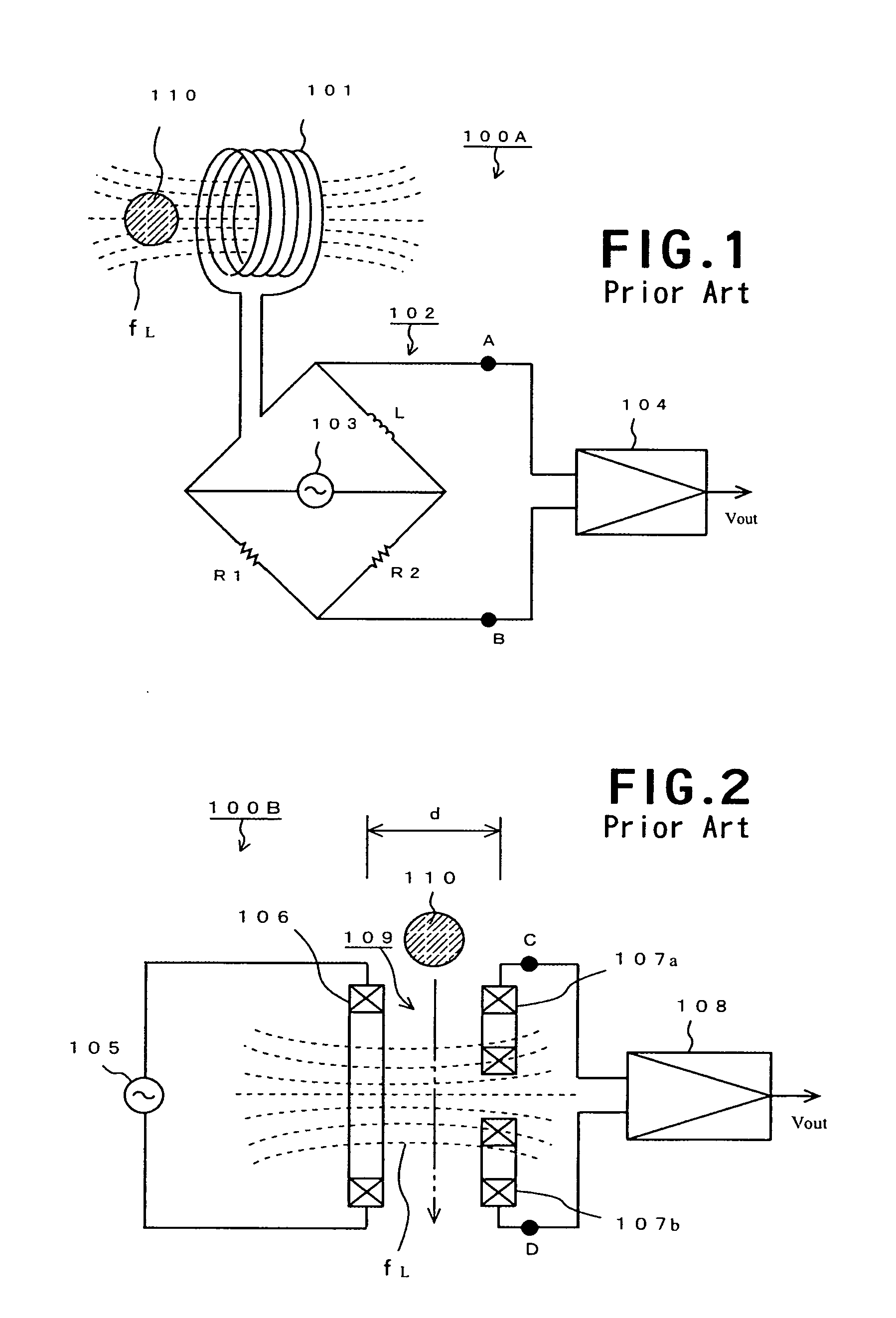Electromagnetic induction type inspection device and method
a technology of electromagnetic induction and inspection device, which is applied in the direction of measurement device, magnetic measurement, instruments, etc., can solve the problems of low sensitivity of inspection device, inability to detect inductance, and inability to discriminate the material of inspection object, etc., to achieve easy inspection or discrimination, high sensitivity, and high accuracy
- Summary
- Abstract
- Description
- Claims
- Application Information
AI Technical Summary
Benefits of technology
Problems solved by technology
Method used
Image
Examples
example 2
Flaw Inspection of a Heat Exchange Pipe (with Artificial Defects)
[0106]As shown in FIG. 11, an inspection sample was prepared by artificially forming three flaws having a mil diameter of 1 mm and depths 0.5, 1.0 and 1.5 mm at intervals of 15 mm in the surface portion of a carbon steel pipe. The measurement of the flaws in the surface of the heat exchange pipe was conducted by inserting the sensor 20 within the heat exchange pipe. The result of the flaw inspection of the heat exchange pipe is shown in FIG. 12, from which it is found that the level values change linearly in effect relative to the depths of the flaws.
example 3
Thickness Inspection of a Carbon Steel Pipe Coated with Thermal Insulation Material (with Artificial Defects)
[0107]As shown in FIG. 13, an inspection sample was prepared by artificially forming thin thickness parts in the inner surface of a carbon steel pipe coated with thermal insulation material and further covered with stainless steel sheet of 0.2 mm in thickness. The thickness inspection was conducted by bringing the sensor into indirect contact with the inspection sample through a guide plate. The result of the thickness inspection of the pipe is shown in FIG. 14, from which it is found that both the level and phase values change with the reduced thicknesses of the pipe. Specifically, the level values largely change.
example 4
Butt Welding Inspection of a Stainless Steel Plate (with Artificial Defects)
[0108]As shown in FIG. 15, an inspection sample was prepared by artificially forming five crack-like flaws of 0.2 mm in width, 10 mm in length and 0.5, 1.0, 2.0, 3.0 and 4.0 mm in depth at intervals of 20 mm in a weld bead surface of butt welded steel plates of SUS304 of 25 mm in thickness. The butt welding inspection was carried out by applying the sensor 20 onto the weld bead surface of the inspection sample.
[0109]As seen in FIG. 16 showing the results of the bun welding inspection of the stainless steel plates, the flaws in the weld bead portion could be detected as changes in phase value. The fluctuation of phase data thus obtained is possibly caused by irregularities on the weld bead surface.
PUM
 Login to View More
Login to View More Abstract
Description
Claims
Application Information
 Login to View More
Login to View More - R&D
- Intellectual Property
- Life Sciences
- Materials
- Tech Scout
- Unparalleled Data Quality
- Higher Quality Content
- 60% Fewer Hallucinations
Browse by: Latest US Patents, China's latest patents, Technical Efficacy Thesaurus, Application Domain, Technology Topic, Popular Technical Reports.
© 2025 PatSnap. All rights reserved.Legal|Privacy policy|Modern Slavery Act Transparency Statement|Sitemap|About US| Contact US: help@patsnap.com



